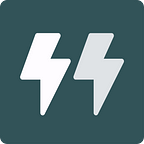User research in pharma
How I gather user insights quickly & cheaply in pharma.
Conducting user research is generally straightforward in some projects, whereby the users are accessible. However, it’s not the same story in industries where users are generally inaccessible.
Think of an eCommerce product example. A company selling shoes for men and women in the UK that wants to optimise the site now to achieve X targets by X time, by learning about users buying preferences and needs. The research details in this project would include members of the general public, that are representative of the persona or user types and are accessible. This is the ‘everyman’ user type. The entry criteria could be as low as ‘do you or have you purchased shoes online?’ Who they might be and what you can learn from them forms the complexities and will inform your project evidence. However, the fact that they are accessible is the first win — you simply need to be smart and creative in how you can reach and work with them.
My experience as a UX architect in the pharmaceutical industry is possibly one of my most challenging to date, in conducting the type of research I need - to deliver better solutions and create the right kind of products for end users.
Why?
Because Pharma is heavily regulated, there are certain types of e.g. products, content that I could not share for feedback or views. It could be misleading or leading and that is risky. You must be vigilant about the risks and the rules in place to adhere to for very good reasons.
I’m mostly creating experiences for HCPs (health care professionals). Here is my main challenge. How to access them for participant feedback and design validation? This is not the everyman type persona with low entry criteria.
They are specific, classified in tiers e.g. primary care physician, secondary care physicians. You wouldn’t find them easily through user research recruitment agencies. Note this doesn't mean it does not exist — it does, after some online research you will find its expensive and that can certainly add pressure on project budget and being able to win stakeholder buy-in for that expense is tricky. User research and end to end experience design in the pharma industry is evolving but has a long way to go to become a normalized and integral part of the digital product that is fully supported both in terms of client management and access to HCPs for research, validation.
So how to get around these barriers?
I am still learning and honing my personal hacks to find and get closer to the HCPs as a target user group. It’s a slow race. I don’t have a membership club card. I still have a very long way to go. However, here is what I have discovered so far that might be useful to you:
- There are dedicated sector recruitment agencies, they market themselves around keywords such as #intelligent #research #management and offer #qualitative and #quantitave with #medical #professionals. They make obvious partners for user research in pharma for your digital projects. The costs are relative to the ‘niche’ participant group they will supply you.
- Seed lists — you can buy seed lists for HCPs, they have opted-in and therefore are open to receiving research in the form of email, surveys. If you choose this avenue — ask the agency for expected metrics on successful completion to give you a sense of scale and expectations.
- Secondary research — no need for tears if you are struggling with primary research, there is a wealth of available research that has been executed, organised, analysed and made available for consumption for a one-off fee.
Okay here’s my: How I gather user insights quickly & cheaply in pharma.
- Interviews. One of my fave qualitative research methods. If you can access a few stakeholders and end users — go and see them, speak to them, take your existing product and/or your artefacts and gather that evidence.
* Use your smartphone to capture their screen interactions, with their permission to follow up with your team back at HQ.
* Take a note-taker to capture notes and verbatim whilst you moderate the session - Desktop research. Youtube key speakers at conferences to learn more about movements in the industry & gather insights into products, drugs whilst you are in project mode.
- Go to the hospital. I booked myself an emergency appointment for bad hayfever. However, I took every opportunity to visually map the signage in the waiting areas to familiarise myself with the language in the context of the experience. I checked out my GPs devices to see what I could gather in terms of connected devices? cloud-based tools? apps? I observed the environment with people count, lighting, placement of educational materials. I timed how long my doctor spent with me.
I hope I don't need to return to the hospital, but honestly, if I did — I’d probably take a pad to sketch and take notes ; )
The other task I look into for industry trends is in healthcare apps. The space in ‘self-care’ is growing and wellbeing is evidently growing as an experience design opportunity. Useful to download and look at the features, conversational UI’s and how they are communicating to digital users. Research does not have to be limited, use all you can to leverage and get in front of a regulated landscape.
